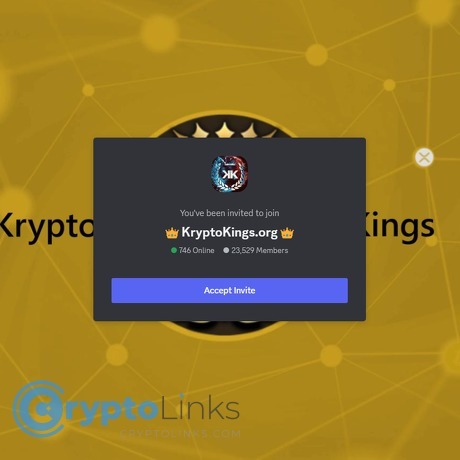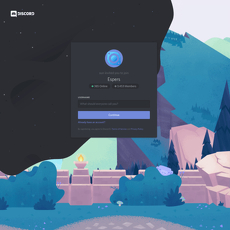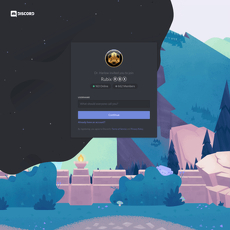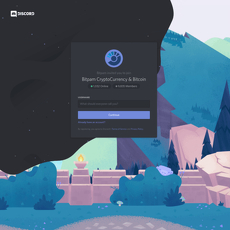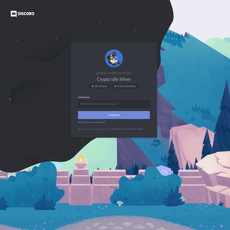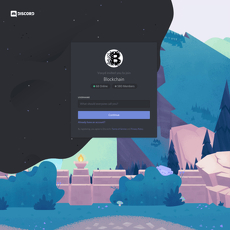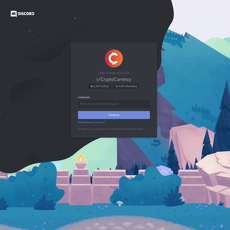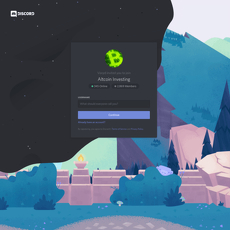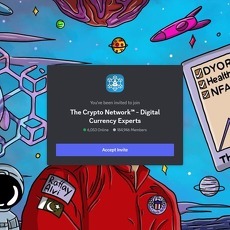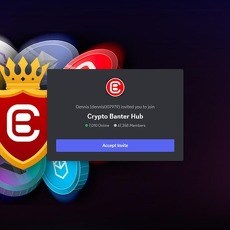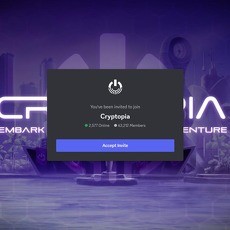KryptoKings.org Review
KryptoKings.org
discordapp.com
KryptoKings.org Discord Review Guide — Everything You Need to Know + FAQ
Is this just another “alpha” server… or a legit place to sharpen your edge?
I’ve asked that question more times than I can count. So I went ahead and checked out KryptoKings.org on Discord and put together a no-hype, quick-read guide you can use to decide fast. If you’ve been burned by noisy servers, vague calls, or hidden paywalls, this is for you.
The real problem with crypto Discords right now
Let’s be honest: most crypto servers talk big and deliver small. Here’s what usually goes wrong and what I actively watch for:
- “Alpha” that isn’t alpha: endless ping spam, recycled CT takes, and signals with no clear invalidation or timeframes.
- Paywalls in disguise: you join for “free,” then find everything useful locked behind unclear tiers.
- Risky by default: if you don’t lock down your Discord settings, it’s easy to get hit with DM scams or fake “mint” links.
- Hard to compare: every server promises “education + signals,” but few stand out for your specific style (day trading, swing, NFT, or long-term).
Quick reality check: both the FTC and Chainalysis have flagged social platforms (including Discord) as hot spots for phishing and investment scams. That doesn’t mean you should avoid Discord; it means you should treat servers like trading tools—useful when configured right, risky when left on default settings.
“Don’t outsource your thinking. Use servers to sharpen your process, not replace it.”
What I’m going to help you do
I built a simple, practical plan around KryptoKings.org so you can test it without wasting time:
- See what stands out inside: how channels are organized, where the value lives, and where things could be tighter.
- Use a fast evaluation checklist: moderation, clarity of signals (if any), education quality, and noise control.
- Run a 7‑day test without getting overwhelmed: a step-by-step approach to judge fit before you commit attention or money.
- Know your options: if KryptoKings.org isn’t your vibe, you’ll have clear alternatives to explore next.
Who this guide is perfect for
- New traders who want structure without being flooded by jargon and FOMO.
- Active day traders who need fast updates and clean risk parameters—not motivational posters.
- NFT participants who want real-time chatter and scam-aware hygiene.
- Long-term investors who prefer thoughtful market context over constant alerts.
What you’ll learn (in plain English)
- Whether KryptoKings.org matches your style: can you get value in 15–20 minutes a day?
- How to read the room fast: channel layout, pinned info, and how to filter for quality.
- How to stay safe on Discord: simple settings and habits that block 90% of common scams.
- How it stacks up: use a few well-known servers as benchmarks while you test this one.
Here’s the best part: you won’t need a spreadsheet or a weekend to figure this out. With a clear checklist and a seven-day plan, you’ll know if KryptoKings.org earns a spot in your daily workflow—or if you should move on.
Ready for the quick snapshot of what KryptoKings.org is and who it helps? Let’s start there next.
KryptoKings.org at a glance: what it is and who it helps
KryptoKings.org on Discord is positioned as a practical crypto hangout: market chat when volatility hits, trade ideas you can dissect, and a steady stream of education so you’re not just copying signals forever. If you’ve ever joined a server and felt lost in noise, the promise here is tighter structure and faster feedback.
“Join for the chat, stay for the clarity.”
That line matters, because clarity is rare. The well-known 90-9-1 participation rule (Nielsen Norman Group) shows most communities have a small core of contributors and a large crowd of readers—so servers that organize discussion and surface the best posts tend to deliver more value, more often. KryptoKings.org looks like it understands that dynamic.
Access and onboarding
Access is straightforward: it’s a free join via the public invite, followed by the usual Discord verification and role setup to personalize your feed.
- Join: Click the invite — https://discord.gg/kryptokings-org-422500326654869505 — accept server rules.
- Verify: Expect a simple captcha or button-click verification. This helps keep bots out and signal-to-noise high.
- Pick roles: Choose interests like BTC, alts, DeFi, NFTs, or trading styles (scalp, swing, spot vs. derivatives) so only relevant channels show up.
- Tune notifications: Mute broad chatter, keep pings for announcements and any strategy or news channels you care about.
Two tiny tweaks make onboarding feel 10x cleaner:
- Pin “Start Here” and Rules: Good servers pin a short orientation—what to read first, what to ignore—for a low-friction start.
- Use tags/roles aggressively: The fewer channels you see on day one, the better your focus. Cognitive Load Theory (Sweller) backs this: reduce extraneous noise, improve decision quality.
Who it’s for
This community is best for people who want speed without chaos—active chat, quick updates, and the freedom to ask questions without getting buried.
- Newer traders: You’ll likely appreciate “why” explanations around market moves and risk notes you can copy into your own playbook.
- Day and swing traders: Fast commentary around levels, liquidity zones, and catalysts can help you plan entries and invalidations.
- Macro-curious holders: If you’re mostly spot with longer timeframes, you still get value from market structure recaps and calendar reminders (CPI, FOMC, unlocks).
- NFT and degen hunters: If those lanes exist, the edge is curated alerts and scam filtering so you’re not chasing every shiny mint.
- Builders/analysts: Research-minded channels (news, on-chain, sector threads) keep you close to signals that matter without living on Twitter all day.
If your style is “quiet research library,” a Discord-first community may feel too fast. If your style is “give me context quickly,” this is your tempo.
First impressions and layout
Expect a tidy, standard layout that prioritizes orientation and then funnels you into the good stuff:
- Announcements: One-way, low-volume posts for server updates, events, and platform changes.
- Rules / Start-here: Pinned guidelines, DM-scam policy, what’s allowed in each channel, and how to tag content.
- General chat: Real-time market talk and quick questions—good mods keep it on-topic.
- Market-specific rooms: BTC/ETH focus, altcoin watchlists, maybe a scalping lane versus higher-timeframe TA.
- Signals or trade ideas (if present): Ideally formatted with entry ranges, invalidation, targets, timeframe, and a brief why. Even better if they link to a chart.
- Education: Short explainers, glossary items, and “how-to” posts you can revisit.
- Research / news: Summaries with source links so you can verify quickly.
- Voice / stage rooms: Scheduled calls for open, close, or special events.
Small details make a huge difference. A clear “Read-me-first” that takes 60 seconds to process keeps newcomers engaged—again, that 90-9-1 rule reminds us most people lurk; a clean layout nudges them to participate sooner.
What I look for right away
When I enter any crypto Discord, a few signals tell me if it’s worth my time:
- Clear channel naming: One purpose per channel. “btc-ta” is analysis, not memes.
- Pinned rules and templates: A short posting template for trade ideas prevents chaos (entry, invalidation, targets, timeframe).
- Moderator presence: You should see spam cleaned up fast and gentle nudges to keep threads useful.
- Transparency on upsells: If there’s a VIP tier, what’s included? Is the free tier still valuable on its own?
- Source-first culture: News posts should include links. If people share on-chain charts, can you verify them?
- Event calendar: Even a simple weekly post—what’s on deck, when voice calls happen, and who’s hosting.
- Searchable breadcrumbs: Well-titled threads and consistent tags make it easy to find past gems in seconds.
These checks aren’t just nitpicking—they’re practical. When a server nails structure, your brain isn’t wrestling with clutter; it’s thinking about trades. That’s the point.
Curious how the actual content stacks up—signals, education, tools, and whether the “news” is truly actionable? That’s exactly what I’m breaking down next. Which channel should you pin first to get the biggest edge in the least time?
Features, channels, and content quality
If you’re thinking “Is this another loud crypto Discord or a place I can actually learn and act with confidence?”, this is where the rubber meets the road. Inside KryptoKings.org, I look for structure that helps you make better decisions in less time. Here’s how I assess the channels, the signal quality (if they share it), and whether the content moves you from copycat to confident.
“Signals without context are just noise. Signals with a clear ‘why’ become a skill you can keep.”
Signals and trade ideas (if offered)
Good calls don’t shout “alpha” — they read like a mini trading plan. If KryptoKings.org posts trade ideas, I want to see:
- Full setup details: entry, invalidation/stop, targets, timeframe, and the thesis behind the trade (market structure, funding, catalysts).
- Risk framing: position sizing notes or at least a suggested R:R (risk:reward). A 1:3 target with a defined stop beats a vague “sending it.”
- Update discipline: threaded follow-ups when conditions change — not victory laps after the fact.
- Clarity by style: separate channels for scalps vs. swings vs. longer‑term holds. Time mismatches are how people blow stops.
- Receipts: timestamps and charts shared before the move, not a gallery of hindsight screenshots.
Sample of what a high‑quality post looks like:
[BTC/USDT – 4H Swing]
Entry: 62,750–63,100 (retest of 4H demand)
Invalidation: Close below 61,900 (4H break of structure)
Targets: 64,800 / 66,200 / 67,500
Thesis: Funding normalized, OI cooled after flush; DXY stalling; on-chain shows exchange outflows upticking. Looking for HL confirmation.
Risk: 0.5–1% per account; adjust if funding flips elevated again.
Chart: link + marked levels
Updates: Will post thread if invalidated or if TP1 hits.
Why I’m picky: research in behavioral finance (Barber & Odean, 2000) shows overactive, impulse trading tends to underperform. Clear invalidations and R:R guard you from that itch to chase.
Education and strategy
Signals fade; frameworks compound. I scan for channels and resources that teach the “why” behind the moves so you can qualify trades yourself. Best‑in‑class education inside a crypto Discord usually includes:
- Playbooks and checklists: simple pre‑trade checklists (trend, level, catalyst, risk, scenario) reduce impulsive clicks.
- Recorded workshops: rewatchable sessions on topics like “Market Structure 101,” “Funding + OI Basics,” “Spot vs. Perps,” and “Journaling that actually sticks.”
- Chart feedback threads: you post your idea, get specific critique (invalidation, missed confluence), and iterate. This is where skill grows fast.
- Post‑trade breakdowns: wins and losses with the same energy. Honest loss reviews are gold; they teach risk and psychology better than any win.
A quick example of an educational snippet I hope to see in KryptoKings.org:
“Funding + OI quick read (15m scalp filter)
- If price up + OI up + funding up → likely trend continuation, but watch for squeeze risk.
- If price up + OI down + funding flat → short squeeze/spot-driven; entries on pullbacks are safer.
- Never trade this in isolation. Pair with level retests and session context.”
This kind of simple rubric calms the mind. It fights FOMO by giving you a repeatable decision tree instead of vibes.
Research, news, and market coverage
Strong crypto Discords aren’t news firehoses — they’re filters. For KryptoKings.org, I judge the research stream by:
- Source quality: links to primary sources like SEC dockets, project GitHubs, Dune dashboards, Messari reports, Token Terminal charts, and reputable on-chain platforms.
- Latency: timestamps matter. “We heard X” is less useful than a fast link with verified context.
- Digest format: summaries that state the “so what” for traders and investors. Example:
[ETH ETF Update – What changes today?]
- Source: SEC docket link (timestamp)
- Implication: reduces structural sell pressure from GBTC-like flows; watch spreads on ETH futures; funding likely to normalize
- Actionables: look for reclaim of weekly level $X; rotate watchlist toward L2s if flows pick up
- Caveat: no guarantees on inflow magnitude; first‑week data is noisy
Bonus points if they cover sectors (L2s, RWA, DePIN, memecoins) with quick frameworks: catalysts, key metrics, and red flags.
Tools, bots, and alerts
Bots can be either your best assistant or your worst distraction. I check whether KryptoKings.org keeps tools purposeful, not spammy:
- Price and level alerts: server‑wide alerts for key HTF levels, not every $50 tick.
- Funding/OI/liquidations: concise snapshots (e.g., hourly) beat minute‑by‑minute noise. A “liquidation map” channel is great when paired with context.
- Whale/mempool trackers: only if they aggregate into patterns (“multiple >$5M stablecoin inflows to exchanges within 30m”). One‑offs mean little.
- Sentiment trackers: poll results, fear/greed, options skew — helpful at extremes, dangerous if used daily as gospel.
How I stress‑test alert quality: after 24 hours, count alerts that actually triggered a plan (entries/exits you noted beforehand) versus pure pings. If fewer than ~10–20% are actionable, that’s classic alert fatigue. In fact, alarm‑fatigue literature (e.g., Cvach, 2012 in healthcare) shows that too many beeps blunt your response accuracy — the same thing happens on Discord when every channel screams.
Events and voice rooms
Live rooms are where communities prove they can think out loud, not just post hindsight charts. Signs KryptoKings.org is serious:
- Regular schedule: recurring calls (e.g., “Weekly Game Plan – Sundays,” “Midweek Check‑In – Wednesdays,” “CPI/Jobs Print Live”). Predictability builds habits.
- Focused agendas: sessions with 3–5 bullet talking points, then Q&A. Example agenda:
[Weekly Game Plan – 30 minutes]
- Macro snapshot (DXY, rates, BTC dominance)
- Sector rotations (L2s, DeFi volumes, memecoins heatmap)
- 2–3 high‑conviction setups with invalidations
- Risk calendar (macro prints, unlocks, major releases)
- Open floor: 10‑minute chart clinic
- Recordings with timestamps: so you can catch up fast and skip straight to what you need.
- Office hours: 1:1 or small‑group time to work on process (journaling, risk, psychology). This is often where members jump levels.
Live rooms also reveal culture fast: do hosts explain the “why,” admit uncertainty, and handle questions respectfully? Or is it chest‑thumping? The answer tells you whether you’ll grow here or just chase the next shiny ticker.
Bottom line for this section: channels and tools are only “features” if they help you act with less noise and more clarity. Next, I’m going to pressure‑test the human side — moderation, transparency, and whether any pricing actually matches the value. Ever wondered how to spot a healthy mod team in under five minutes?
Moderation, transparency, and value for money
Moderation and community culture
In crypto Discords, moderation isn’t a nice-to-have—it’s the moat. A server can have sharp traders and sleek tools, but if spam, fake links, and ego wars run free, you’ll burn out fast.
“Speed is trust. If a scam sits for hours, I’m gone.”
Here’s how I gauge whether a server like KryptoKings.org is actually safe and usable day to day:
- Rules that mean something: Clear policy on unsolicited DMs, link posting, promotions, and how to report a scam. Bonus points if there’s a #rules channel that’s pinned and enforced.
- Active mod presence: You should regularly see mods removing shady links, warning repeat offenders, and nudging people to the right channels. A public #mod-log or #updates channel shows they’re accountable.
- Verification and safety defaults: Captcha/phone/email verification, media-only mode for new accounts, slowmode during volatile moments, and a visible “no-DM first” rule.
- Respectful debate, low drama: Signals and strategies can be debated without insults. Check how disagreements are handled—good leaders redirect, not escalate.
- Fast scam cleanup: Phishing links and fake “support” accounts get nuked in minutes, not hours. If they linger, assume risk here is higher than average.
Why am I picky? Because the data backs it. Research on online communities from Stanford (Cheng et al., ICWSM) found that timely, consistent moderation curbs toxic behavior and improves long‑term health. And the FTC has repeatedly warned that social platforms are a top vector for investment scams; the faster a server reacts, the safer your experience tends to be.
Quick personal test you can run: post a basic, good-faith question in their main market channel. Are you helped, dogpiled, or ignored? The tone you feel in 5 minutes is usually the tone you’ll live with.
Track record and transparency
Bold win-rate banners and “99% accuracy” claims are the oldest trick in the book. I look for receipts, not rhetoric:
- Timestamped calls with clear criteria: Entries, invalidation/stop, targets, and timeframe. If a call “evolves” mid‑trade without a record, your PnL will suffer.
- Post‑mortems, not just victory laps: Healthy culture owns losers. A weekly recap that shows missed targets and what was learned is the mark of pros, not promoters.
- Forward test over backtest: Track the next 5–10 calls in real time with paper trading. Screenshot the original message link and record outcomes. Two weeks of honest forward testing beats any backfilled chart.
- No cherry-picking: If highlights only show home runs while the feed is filled with “scratch” exits and edits, you’re seeing marketing, not performance.
- Education > dependency: Transparent communities explain the why behind calls. If the “why” is always hidden behind a paywall or a vague “proprietary” label, be cautious.
A simple scorecard I use while testing KryptoKings.org or any peer server:
- Clarity (0–5): Is every call complete?
- Honesty (0–5): Are losses logged and discussed?
- Repeatability (0–5): Can I replicate the logic on my own?
- Latency (0–5): Are updates fast when market conditions flip?
If the total is under 12, it’s probably entertainment, not an edge.
Pricing, tiers, and refunds (if applicable)
Crypto Discord pricing can be a maze—free chats, “VIP alpha,” tool add-ons, and seasonal lifetime deals. I don’t judge by price first; I judge by clarity. Here’s what I confirm before paying for anything:
- Exactly what’s included: List of channels, tools, call frequency, live sessions, and support. If it’s vague, I assume the value is too.
- Trial or test window: 3–7 days is ideal. If there’s no way to test, that’s friction by design.
- Refund policy in writing: Is there a real refund window? Pro‑rated refunds on yearly plans? “No refunds ever” is common, but it means you must be extra strict with your own test plan.
- Billing transparency: Renewal date, cancelation steps, and payment processor (Stripe/Patreon/Gumroad are easier than crypto‑only wallets for consumer protection).
- Free tier has real value: If the free area is pure promos and memes, I hesitate to pay. Good servers let you taste the quality without the upsell pressure.
How I sanity‑check value for money:
- Time saved: If a server saves you 3 hours/week of research and you value your time at $25/hour, that’s $300/month in time alone.
- Quality uplift: Are your entries/exits and risk sizing objectively better after two weeks? If not, the price is irrelevant.
- Overlap tax: If you already pay for a scanner, a news feed, and charting tools, make sure a paid tier isn’t duplicating what you own.
Tip: Beware “lifetime” offers with no roadmap or governance. Communities evolve; your fee should reflect ongoing delivery, not a one‑time hype cycle.
Where it fits among alternatives
If you’re benchmarking KryptoKings.org, I map servers by their center of gravity:
- Signals-first: Often loud and fast. Think names people toss around like Elite Crypto Signals, Cryptohub, or Jacob’s Crypto Clan. Great for quick ideas, but verify the audit trail.
- Tooling/indicator-centric: If you live on TradingView, something like LuxAlgo can complement any Discord—less community, more charts and rulesets.
- Macro/meme culture: WallStreetBets is chaos and sentiment. Good for gauging heat, not precise entries.
- NFT/art and provenance: Larva Labs announcements and communities like r/NFT are useful for collectors and project discovery, not trade calls.
- Education-first communities: Some groups (including Axion Crypto-Community style setups) focus on workshops, playbooks, and structured learning. Slower, but durable.
Where might KryptoKings.org land? If it balances quick market chatter with tight moderation and clear call structure, it sits in that sweet spot between noise and rigidity. If it leans too hard into paywalled “VIP alpha” without receipts, I put it in the entertainment drawer and move on.
One last thing. The platforms we use can help or hurt. The FTC keeps flagging social media as a prime channel for investment scams, and Chainalysis’ crime reports show social engineering still drives a huge chunk of crypto losses. That’s why moderation and your own safety settings go hand in hand. Want the exact setup I use to lock down Discord and avoid fake links, impostors, and DM hustles? Keep going—up next is the simple checklist I wish someone handed me on day one.
Safety first: using Discord wisely for crypto
One bad click can drain a wallet. I’ve seen great traders wiped out by a rushed signature or a fake “mod” sliding into DMs. If you want to explore crypto servers like KryptoKings.org without stress, treat Discord like a trading terminal: set it up right, and stick to rules that keep you out of trouble.
“If it’s urgent and in your DMs, it’s a scam.”
How safe is Discord to use?
Discord can be safe, but only if your settings and habits are. The platform is a social graph—attackers know this and target trust, not just tech. A few data points worth knowing:
- Social platforms are the top entry point for crypto scams. The FTC reports billions lost to social-media–originated scams since 2021, with crypto among the biggest loss categories (FTC Data Spotlight).
- Wallet-draining phishing is rampant. Security researchers tracked hundreds of millions stolen in 2023 via “drainer” kits that rely on deceptive links and rushed signatures (Chainalysis 2024, ScamSniffer 2023).
The patterns are repeatable: fake links in chats, malicious files, impersonators in DMs, pump-and-dump rooms, and “urgent” mints or giveaways. The good news: a handful of switches and habits blocks most of it.
Smart setup and habits
Here’s the security setup I use before I browse any crypto server:
- Shut off DMs from server members: In Discord settings, disable “Allow direct messages from server members.” If you must keep it on, assume every DM is hostile until proven otherwise.
- Use app-based 2FA everywhere: Turn on 2FA for Discord and exchanges using an authenticator app (not SMS). If your exchange supports it, add a hardware key (YubiKey/passkey).
- Password manager + unique logins: One strong unique password per account. If an email shows up on breach lists (Have I Been Pwned), rotate credentials.
- Never sign blind: Treat every wallet signature as a “contract.” Use transaction simulators like Wallet Guard or Pocket Universe so you can see what’s really happening before you approve.
- Use a burner wallet for mints/airdrops: Keep your main assets on a hardware wallet. Use a separate hot wallet for experiments. Regularly review approvals with revoke.cash or Etherscan’s approval checker.
- Click hygiene: Hover to preview URLs. Watch for lookalikes like “disçord(.)gg” or “metåmask(.)io.” If a file arrives via DM—ZIP, SCR, EXE, or “PDF.exe”—do not open it. Pre-scan with VirusTotal.
- Confirm identities in public first: If “staff” DMs you, don’t engage. Ask them to reply in a public channel or check a pinned “official staff” list. Impersonators copy names and avatars; check profiles carefully.
- System basics: Keep OS and browser updated, only essential extensions installed, and ad/tracker blocking on. Malware like RedLine/Vidar steals cookies and seed phrases; prevention beats cleanup.
- Zero trust for “support” or “verification” flows: No legit mod will ask for your seed phrase, remote access, or to “verify” by sending funds.
Real sample I’ve seen more than once: a user gets a DM “from staff” about a “delisting” and a link to “re-verify your wallet.” The site asks for a signature that grants token spending. Ten minutes later, the wallet’s drained. This happens fast because it’s engineered to be urgent.
Server-level safety signals
When I join a new crypto Discord, I quickly scan for protections that show the team cares about member safety. Green flags include:
- Strong verification gate: CAPTCHA or manual intro steps before you can post; new accounts limited.
- Anti-phishing and link controls: Bots that auto-delete suspicious links, slowmode during breaking news, and a culture of citing sources.
- Clear DM policy: Pinned rule: “No staff will DM you first.” Repeated reminders in announcements.
- Scam-reporting channel: A dedicated place to report phishing with fast mod response and ban logs.
- Official links hub: One pinned message with verified URLs only—site, X/Twitter, docs—so members have a single source of truth.
- Transparency on incidents: If a fake link slipped through, they acknowledge it, summarize impact, and update defenses.
If I don’t see these within minutes, I raise my guard or move on. High-signal communities treat safety like uptime.
Red flags to avoid
- Guaranteed returns, secret “arb bots,” or “low-risk daily payouts.” Markets don’t guarantee; scammers do.
- Pressure to send funds off-platform for “VIP access,” “tax unlocks,” or “wallet verification.” Hard no.
- DM-only mints or allowlists with countdown timers. Real drops are announced publicly and cross-checked on official sites.
- “Mod” or “founder” DMs from accounts created recently or without verified staff roles. Always verify in public.
- Pump rooms coordinating buys/sells. Besides being unethical (and sometimes illegal), they’re designed so you’re the exit liquidity.
No trade is worth your seed phrase. If you feel rushed or emotionally triggered—FOMO, fear, greed—that’s your cue to slow down. Scammers script urgency because patience ruins their plan.
Want a fast, low-stress way to try a new server while staying safe and focused? I’ve got a simple 7‑day plan you can copy starting today—curious what to do on day one?
How to get value fast: a simple 7‑day test plan
Day 0–1: Join and set filters
First things first: join , complete verification, and pick roles that match how you actually trade (BTC, ETH, alts, NFTs, DeFi—don’t select everything).
Then cut the noise hard. Here’s the setup I use to turn any crypto Discord into a focused workspace:
- Notifications: Server Settings → Only @mentions. Mute entire categories that aren’t relevant (memes, off-topic, giveaways).
- Pin and favorite: Announcements, market news, your primary coin channels (e.g., BTC/ETH), and any education/strategy threads. Star them so they’re always at the top.
- 1‑page goal: Write a tiny success definition for your 7‑day test: “By day 7, I want 2 actionable insights I can explain back in one paragraph each.”
- Watchlist: Pick 3 assets max and set alerts in your charting app (e.g., 4H levels). Don’t follow 30 tickers—you’ll end up following none.
Why this works: research on attention shows it takes ~23 minutes to refocus after interruptions (Gloria Mark, UC Irvine). Trimming notifications and pinning key channels protects your attention. A small checklist also reduces decision fatigue—Atul Gawande popularized how checklists cut errors even for experts.
Day 2–3: Observe and note quality
Now watch. Don’t trade yet—just measure signal quality and rhythm.
- How trade ideas are framed: Do posts include entry, invalidation/stop, targets, timeframe, and the “why”? If a claim is made, is there a chart or source?
- Speed and sourcing: When big news hits (CPI, ETF flows, large liquidations), how fast does it show up with sources? Compare timestamps against your Twitter/terminal.
- Moderation in action: When spam or a fake link appears, time how fast mods remove it and warn users.
Use a quick 1–5 rubric for each day:
- Clarity: Are ideas specific, with risk defined?
- Consistency: Are follow-ups posted after moves, or do ideas vanish?
- Education: Do posts teach a repeatable process, not just “buy/sell”?
Keep a minimal log (30 seconds per post): date, asset, thesis, invalidation, source link. Documenting decisions is linked to better performance in many domains; the CFA Institute stresses process documentation to reduce bias and improve repeatability.
Day 4–5: Engage with intent
If the culture feels constructive, participate—briefly and clearly. I use a simple format to get quality replies fast:
- Smart question template (PAIR):
- Pair: e.g., BTC/USDT
- Active timeframe: 1H/4H
- Idea: “Rejecting 200MA; looking for reclaim of 66.2k or breakdown of 64.8k”
- Reason:
Question: “Is my invalidation (64.4k) sensible for 4H momentum, or too tight?”
- Share one chart with two sentences of reasoning and your invalidation. Ask for critique, not confirmation.
- Test the vibe: Do you get thoughtful feedback or emoji-only reactions? How long do responses take? Are you pointed to learning resources?
Active participation improves learning outcomes; a large meta‑analysis (Freeman et al., PNAS 2014) found active learning outperforms passive consumption. Also look for psychological safety—teams with open, respectful feedback loops learn faster (Amy Edmondson’s research). If your chart gets constructive critique, that’s a strong sign you can grow here.
Day 6–7: Evaluate fit and next steps
Time to judge—objectively. Here’s the checklist I use before I commit time or money:
- Signal quality: Clear entries, stops, targets, and updates after the move?
- Education value: Do you understand the “why,” or are you forced to copy blindly?
- Moderation/safety: Fast scam cleanup, no tolerance for unsolicited DMs, verified announcements?
- Culture: Respectful, helpful, and accountable—or hype‑driven?
- ROI on time: Did you log at least 2 insights you can explain back and reuse?
If there’s a paid tier, do a quick expected‑value check:
- Map features to your need: If you swing trade, do you actually need day‑trade voice calls?
- Budget rule of thumb: Tool/education spend ≤ 1–2% of trading capital per year. Overspending increases pressure to “make it back,” which can fuel overtrading (Barber & Odean 2000).
- Payback test: Would this tier reasonably help you avoid one bad trade a month that’s larger than the fee? If not, pass.
Also check for flexible trials or refunds. Avoid sunk‑cost thinking—if it’s not serving your process by day 7, step away.
Handy extras
- Daily 15‑minute routine: Scan pinned announcements → market news → your 3 watchlist channels → note 1 insight → log it. Done.
- Micro‑journal template: “Plan, Invalidation, Outcome, Lesson.” Four lines per idea. That’s enough to build compounding insight.
- Pre‑mortem question: “If this server ends up wasting my time, why?” Prevent the failure you predict.
- Keyboard hygiene: Create a server‑specific notes doc. Copy any idea you act on into it. Don’t rely on memory; memory lies when PnL is involved.
Pro tip: You’re not testing whether the community can predict the market; you’re testing whether it improves your process. Clarity + education + culture = keep. Noise + hype = skip.
Want my bottom‑line verdict and quick answers to the most common questions (including which crypto Discords people benchmark against and how safe Discord really is)? I’ve got that next—curious what made the cut?
FAQ and final take
What is the best crypto Discord?
There isn’t a single “best” server. Pick the one that fits how you learn and trade. Here are common benchmarks people use to calibrate expectations:
- Elite Crypto Signals — signal-first and fast paced; a good reference for how clearly calls can be formatted.
- Cryptohub — broad market chatter and news-flow; useful to compare noise vs. signal.
- Jacob’s Crypto Clan — beginner-friendly education and streams; good for learning the “why.”
- WallStreetBets — huge crowd and high energy, but noisy; decent for gauging retail sentiment: r/wallstreetbets.
- Axion Crypto-Community — TA-focused rooms; compare how they teach risk management.
- Larva Labs — OG NFT hub; great to sense NFT culture and provenance: larvalabs.com.
- LuxAlgo — indicator-driven community; look at how members apply tools: luxalgo.com.
- r/NFT — broad NFT discussion; helpful for market temperature checks: r/NFT.
Use these as yardsticks while you test KryptoKings.org. Don’t join everything at once—pick two or three and compare clarity, culture, and consistency.
How safe is Discord to use?
It can be safe if you lock down your settings and stick to basic security habits. A few quick facts to keep you grounded:
- Investment fraud is real: The FBI’s 2023 IC3 report estimates $3.94B in crypto investment fraud losses alone. Source: IC3 2023.
- Social platforms are prime hunting grounds: The FTC has repeatedly warned that social media is a major vector for scams luring people into crypto “opportunities.” Source: FTC Data Spotlight.
- Malware abuses Discord infrastructure: Researchers have documented malware campaigns using Discord’s CDN and webhooks to spread payloads. Source: Kaspersky.
My safe-setup checklist (takes 3 minutes):
- Turn off DMs from server members by default: Discord privacy settings.
- Enable 2FA on Discord and any exchange: Discord 2FA guide.
- Never sign or connect wallets via links sent in DMs. If a “mod” pings you, verify publicly in the server before you act.
- Use a burner wallet for testing mints/tools and keep your main holdings on a hardware wallet.
- Watch server hygiene: verification gates, anti-phishing bots, fast scam cleanup, and a rule against unsolicited DMs are green flags.
Rule of thumb: the more a server encourages public, on-record support (not DMs), the safer your day-to-day experience.
Is KryptoKings.org worth your time?
If you want active chat, practical market commentary, and organized channels, it’s worth a focused 7‑day trial. Here’s what I consider a pass/fail in week one:
- Clarity of calls: Good trade ideas show entry, invalidation/stop, targets, timeframe, and context. Example: “Long SOL spot on reclaim of $145 (1D), invalidation $139, take-profit $158/$168; thesis: strong L1 rotation + open interest reset.”
- Education beats hype: When news hits, the best rooms add a two‑line takeaway and a source link, not just emojis.
- Responsive moderation: Spam and impersonators get removed fast, usually within minutes during peak hours.
- Respectful back‑and‑forth: You can ask a “basic” question and get a useful answer without being mocked.
If you prefer structured courses, slower research threads, or deep weekly reports, you might lean toward education‑first communities. If real‑time discussion and quick reads fit your workflow, KryptoKings.org can slot in nicely.
Final take
My verdict: Join via the public invite, set your safety controls first, and give it seven days of intentional use. Judge by three things—clarity (are calls and news actually usable?), education (do you learn the “why”?), and culture (is moderation real and are members helpful?).
If it checks those boxes for you, keep it in your daily workflow. If not, you’ve got solid alternatives to test next. Either way, keep your wallet and seed phrase off Discord, stay in public channels for help, and let the quality of information—not the volume of messages—make the decision for you.
CryptoLinks.com does not endorse, promote, or associate with Discord that offer or imply unrealistic returns through potentially unethical practices. Our mission remains to guide the community toward safe, informed, and ethical participation in the cryptocurrency space. We urge our readers and the wider crypto community to remain vigilant, to conduct thorough research, and to always consider the broader implications of their investment choices.

